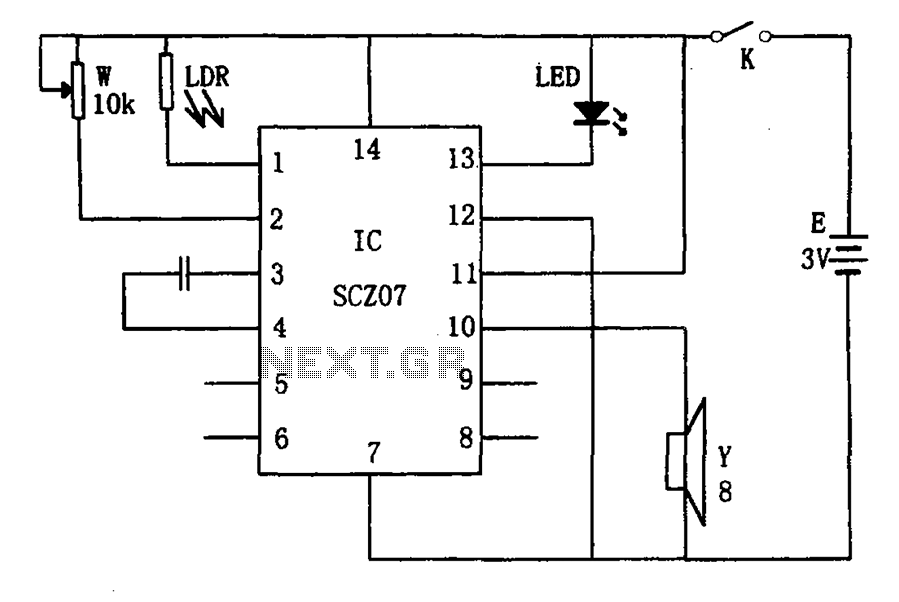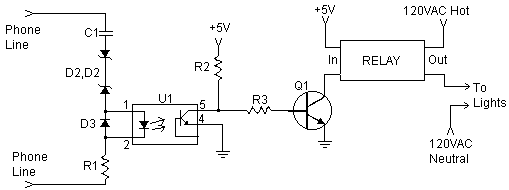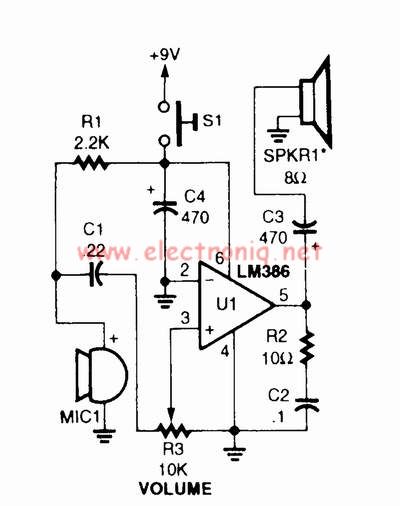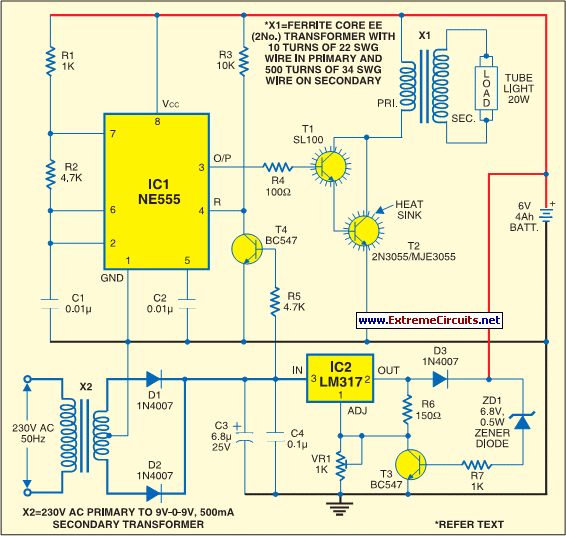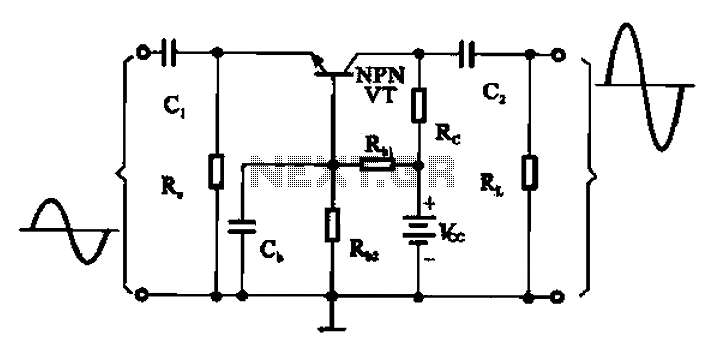
IC AM radio circuit
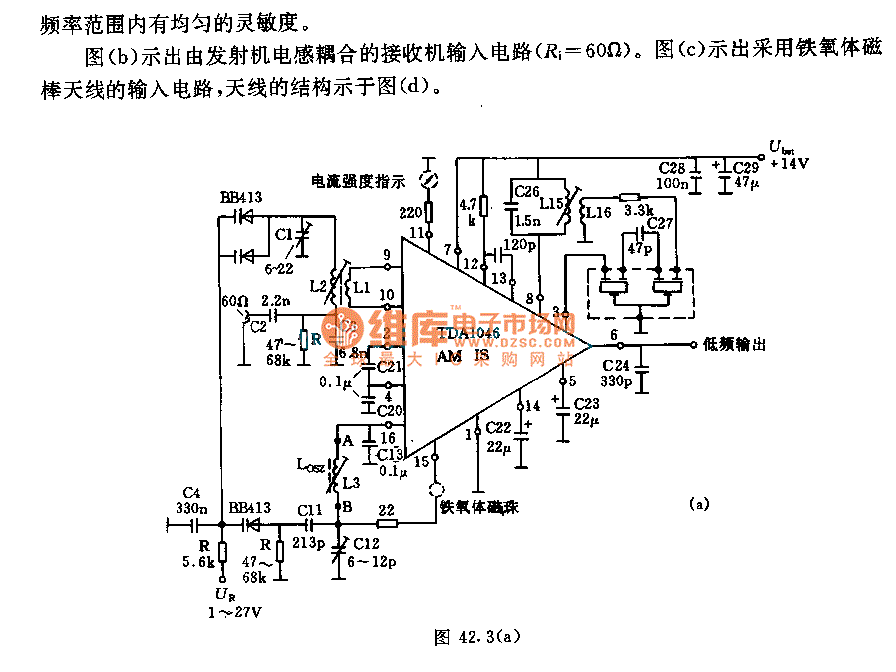
The receiver input circuit is powered by a 60Ω generator. A low-pass filter is employed to permit the entire frequency range while maintaining uniform sensitivity. The receiver input circuit is coupled with a transmitter inductive component (Ri = 60Ω). Additionally, the input circuit utilizes a ferrite antenna, with its structure depicted in the accompanying figure.
The receiver input circuit is designed to operate with a 60Ω generator, which ensures optimal impedance matching and efficient power transfer. The incorporation of a low-pass filter serves to eliminate high-frequency noise while allowing signals within the desired frequency range to pass through. This design choice is critical for maintaining uniform sensitivity across the operational bandwidth, thereby enhancing the overall performance of the receiver.
The coupling of the receiver's input circuit with the transmitter's inductive element is a key feature, as it facilitates the transfer of signals between the two components while maintaining the characteristic impedance of 60Ω. This coupling arrangement is essential for minimizing signal reflections and maximizing the efficiency of the system.
The use of a ferrite antenna in the input circuit provides several advantages, including improved signal reception and reduced interference. Ferrite antennas are known for their compact size and ability to operate effectively across a wide range of frequencies. The structural design of the ferrite antenna, as illustrated in the accompanying figure, is optimized to enhance its performance characteristics, such as gain and radiation pattern.
In summary, the receiver input circuit is a well-engineered assembly that integrates a 60Ω generator, a low-pass filter for frequency management, an inductive coupling mechanism with the transmitter, and a ferrite antenna for effective signal reception. Each component plays a crucial role in ensuring the reliable operation of the receiver within its intended application.The receiver ( Figure a) input circuit is supplied by the 60? generator. Low -pass filter allows the entire frequency range with uniform sensitivity. Figure b shows the receiver input circuit coupled with transmitter inductive (Ri = 60?). Figure c shows the input circuit with ferrite ferrite antenna, the antenna structure is shown in Figure (d).. 🔗 External reference
The receiver input circuit is designed to operate with a 60Ω generator, which ensures optimal impedance matching and efficient power transfer. The incorporation of a low-pass filter serves to eliminate high-frequency noise while allowing signals within the desired frequency range to pass through. This design choice is critical for maintaining uniform sensitivity across the operational bandwidth, thereby enhancing the overall performance of the receiver.
The coupling of the receiver's input circuit with the transmitter's inductive element is a key feature, as it facilitates the transfer of signals between the two components while maintaining the characteristic impedance of 60Ω. This coupling arrangement is essential for minimizing signal reflections and maximizing the efficiency of the system.
The use of a ferrite antenna in the input circuit provides several advantages, including improved signal reception and reduced interference. Ferrite antennas are known for their compact size and ability to operate effectively across a wide range of frequencies. The structural design of the ferrite antenna, as illustrated in the accompanying figure, is optimized to enhance its performance characteristics, such as gain and radiation pattern.
In summary, the receiver input circuit is a well-engineered assembly that integrates a 60Ω generator, a low-pass filter for frequency management, an inductive coupling mechanism with the transmitter, and a ferrite antenna for effective signal reception. Each component plays a crucial role in ensuring the reliable operation of the receiver within its intended application.The receiver ( Figure a) input circuit is supplied by the 60? generator. Low -pass filter allows the entire frequency range with uniform sensitivity. Figure b shows the receiver input circuit coupled with transmitter inductive (Ri = 60?). Figure c shows the input circuit with ferrite ferrite antenna, the antenna structure is shown in Figure (d).. 🔗 External reference
